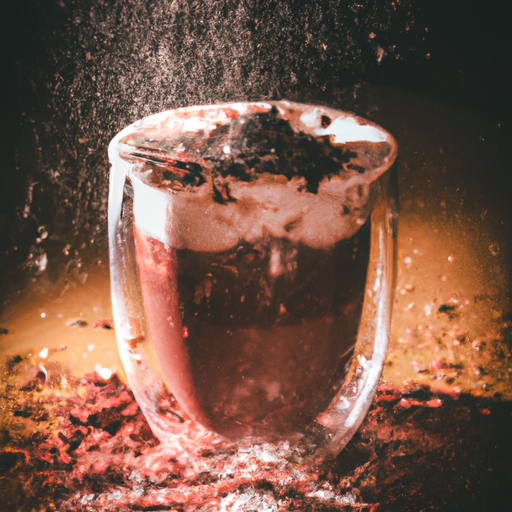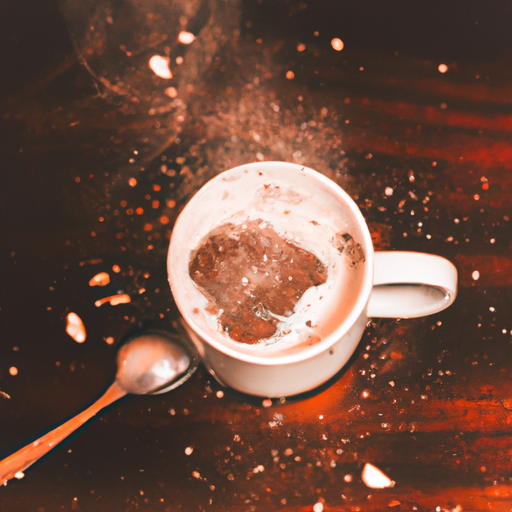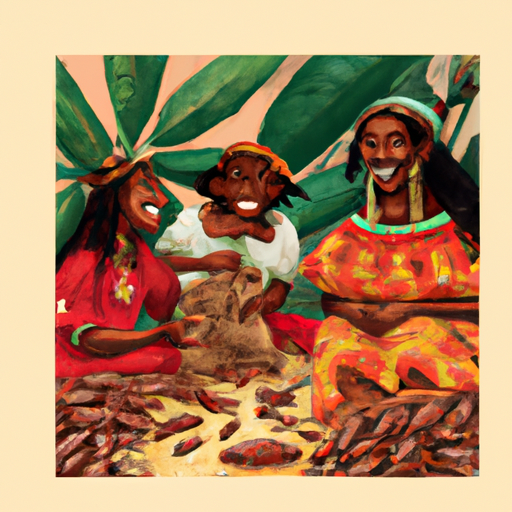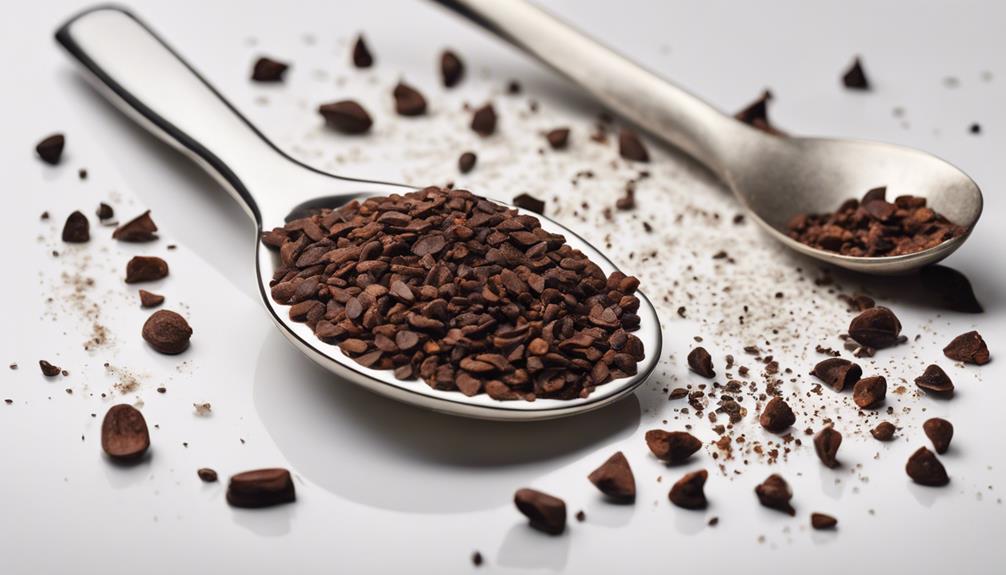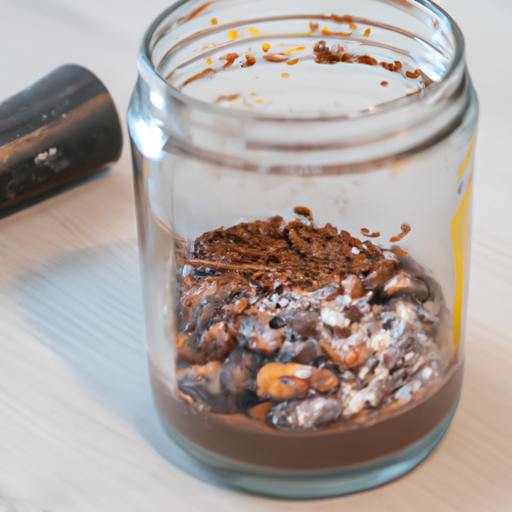Are you looking for a delicious, decadent beverage that can satisfy your sugar craving while also offering multiple health benefits? Explore the wonderful realm of raw cacao.
This heavenly ingredient is not your average chocolate powder; it’s a powerhouse of antioxidants, minerals, and mood-boosting compounds. And guess what? Making your own raw cacao drink is a breeze!
In just a few simple steps, you can create a velvety, chocolatey concoction that will leave you feeling both nourished and delighted. Whether you’re a chocolate lover or a health enthusiast, this article will guide you through the process of crafting the perfect raw cacao drink.
So get ready to indulge in a guilt-free, decadent treat that will satisfy your cravings and support your well-being.
Key Takeaways
- Raw cacao is a powerhouse of antioxidants, minerals, and mood-boosting compounds.
- Choosing the right type of milk and sweeteners can enhance the flavor of your raw cacao drink.
- Select high-quality raw cacao for the best flavor and health benefits, opting for organic and fair-trade options.
- Follow the preparation steps carefully, including heating the milk slowly, blending until smooth, and adding optional flavor enhancers.
Gather Your Ingredients
Before you can indulge in a rich and creamy raw cacao drink, it’s time to gather all of your delectable ingredients. Start by choosing the right type of milk. While cow’s milk is a popular choice, there are plenty of alternatives available such as almond milk, coconut milk, or oat milk. Experiment with different types to find the one that suits your taste buds best.
Next, it’s time to explore alternative sweeteners. Raw cacao itself has a natural bitterness, so adding a sweetener is essential. Instead of using refined sugar, consider options like honey, maple syrup, or dates. These natural sweeteners not only add a touch of sweetness but also provide added nutrients.
Once you have gathered all your ingredients, it’s time to move on to the next step – choosing high-quality raw cacao. This is crucial as the quality of raw cacao can greatly impact the flavor of your drink. Look for organic and fair-trade options to ensure you are getting the best quality and supporting sustainable practices.
Choose High-Quality Raw Cacao
Once you’ve laid eyes on a velvety smooth, deep brown gem, your taste buds will yearn for nothing else. Choosing high-quality raw cacao is essential to create a delicious and nutritious cacao drink. When choosing organic cacao, you ensure that the beans have been grown without the use of pesticides or artificial fertilizers, preserving their natural flavors and health benefits.
There are different types of cacao available, each offering a unique taste profile and nutritional composition. For a rich and intense flavor, opt for raw cacao powder. If you prefer a more complex and fruity taste, go for cacao nibs. And if you want a balance between bitterness and sweetness, choose cacao paste.
With these high-quality cacao options, you can create a decadent cacao drink that will tantalize your taste buds.
Now, let’s move on to the next step and heat your milk of choice.
Heat Your Milk of Choice
To create a truly indulgent experience, elevate your cacao concoction by gently heating your preferred milk until it reaches the perfect temperature. The choice of milk can greatly impact the flavor and texture of your raw cacao drink. From creamy dairy milk to plant-based alternatives like almond, coconut, or oat milk, each option offers a unique taste profile. Experimenting with different types of milk can add depth and richness to your beverage. When it comes to heating the milk, there are various methods to choose from. Some prefer using a stovetop, while others opt for a microwave or a milk frother. Whichever method you choose, be sure to heat the milk slowly and avoid boiling it, as this can alter the taste and texture. Once your milk is perfectly heated, you’re ready to move on to the next step of adding raw cacao and sweetener.
Add Raw Cacao and Sweetener
Indulge your taste buds with a rich and decadent blend of raw cacao and a hint of sweetener, creating a blissful symphony of flavors in every sip.
When it comes to choosing a sweetener for your raw cacao drink, there are plenty of alternatives to explore. Natural sweeteners like maple syrup, honey, or coconut sugar can add a touch of sweetness without overpowering the rich flavor of the raw cacao.
Not only does raw cacao enhance the taste of desserts, but it also offers numerous health benefits. Packed with antioxidants, minerals, and mood-boosting compounds, raw cacao can be a guilt-free indulgence.
So, as you add the raw cacao and sweetener to your heated milk, be prepared for a delightful treat that not only satisfies your cravings but also nourishes your body.
Now, let’s move on to the next step and mix until smooth and creamy.
Mix Until Smooth and Creamy
Now, let’s blend everything together until we achieve a velvety, luscious texture that’ll have your taste buds dancing with joy. Using a high-speed blender is crucial for creating the perfect raw cacao drink.
Here are some blender tips to ensure a smooth blend:
- Start with small amounts of liquid and gradually increase as needed to avoid a watery consistency.
- Blend on high speed for at least 2 minutes to fully incorporate all the ingredients and create a creamy texture.
- Stop the blender occasionally to scrape down the sides, ensuring everything is well mixed.
Experimenting with different flavor combinations can take your raw cacao drink to the next level. Some popular options include adding a pinch of cinnamon for warmth, a splash of vanilla extract for extra richness, or a drizzle of honey for sweetness. These additions can enhance the flavor profile and make your drink even more enjoyable.
Moving on to the next section, let’s explore some optional additions for extra flavor.
Optional Additions for Extra Flavor
Enhance your velvety blend with optional additions for an extra burst of flavor. By adding flavorful enhancements and unique twists to your raw cacao drink, you can elevate its taste to new heights. Consider trying the following additions to create a truly indulgent experience:
| Additions | Benefits |
|---|---|
| Cinnamon | Adds warmth and a hint of spice |
| Vanilla extract | Provides a sweet and aromatic touch |
| Sea salt | Enhances the richness of cacao flavor |
These optional additions can be mixed into your raw cacao drink, allowing you to customize it according to your preferences. Once you have perfected your blend, it’s time to serve and enjoy this delicious treat. Transitioning into the next section, remember to savor each sip as you revel in the delightful flavors of your homemade raw cacao drink.
Serve and Enjoy
Once you’ve perfected your velvety blend, it’s time to savor each sip and let yourself be transported to a world of pure chocolate bliss.
To enhance the taste of your raw cacao drink, there are a few serving suggestions you can try. Adding a sprinkle of cinnamon or a dash of vanilla extract can bring out the natural flavors of the cacao. For a hint of sweetness, drizzle some honey or maple syrup into your cup. If you prefer a creamier texture, try stirring in a spoonful of coconut cream or almond milk.
These additions can elevate the taste and take your raw cacao drink to the next level.
Now that you’ve mastered the art of serving, it’s time to experiment with different variations to truly make this drink your own.
Experiment with Different Variations
Now that you know how to serve and enjoy your raw cacao drink, let’s take it a step further and experiment with different variations. One of the great things about raw cacao is its versatility, allowing you to create unique flavor combinations that suit your taste buds. You can add various ingredients to enhance the flavor, such as cinnamon, vanilla extract, or even a pinch of sea salt. Additionally, if you prefer your drink to be sweeter, you can try alternative sweeteners like honey, maple syrup, or coconut sugar. To help you visualize the possibilities, here is a table showcasing different flavor combinations and alternative sweeteners:
| Flavor Combinations | Alternative Sweeteners |
|---|---|
| Cinnamon | Honey |
| Vanilla extract | Maple syrup |
| Sea salt | Coconut sugar |
Now that you have some ideas to play around with, let’s move on to the next section and delve into the health benefits of raw cacao.
Health Benefits of Raw Cacao
Indulging in a flavorful concoction of raw cacao offers an array of health benefits that can greatly contribute to overall well-being.
Raw cacao, derived from the seeds of the Theobroma cacao tree, has a rich history and origins dating back to the ancient Mayans and Aztecs. They revered it for its medicinal properties and believed it enhanced mood and energy levels. Today, modern research supports these claims, revealing that raw cacao is packed with antioxidants, minerals, and mood-boosting compounds.
- Raw cacao is a powerful source of antioxidants, which help protect the body against free radicals and oxidative stress.
- It contains high levels of magnesium, which can support muscle function, bone health, and alleviate stress.
- Raw cacao is rich in flavonoids, which have been linked to improved heart health and reduced risk of cardiovascular diseases.
- The presence of phenylethylamine in raw cacao can promote feelings of happiness and well-being.
In addition to its health benefits, raw cacao can be used in various recipes, adding a bold and intense flavor profile to desserts, smoothies, and even savory dishes. So go ahead and embrace the goodness of raw cacao to enhance your well-being and elevate your culinary creations.
Frequently Asked Questions
Can I use regular cocoa powder instead of raw cacao in this recipe?
Yes, you can substitute regular cocoa powder for raw cacao in this recipe. However, it’s important to note that there are nutritional differences between the two. Raw cacao is less processed and retains more antioxidants and nutrients.
How do I choose the right milk alternative for this drink?
Choosing milk alternatives for this drink depends on personal preferences and dietary restrictions. Some options include almond milk, coconut milk, and oat milk, each offering unique benefits such as added nutrients and creaminess.
What are some alternative sweeteners I can use instead of regular sugar?
Some alternative sweeteners for raw cacao drink include honey, maple syrup, and stevia. These sweeteners provide a healthier option compared to regular sugar, as they contain beneficial nutrients and have lower glycemic indexes.
Are there any specific brands of raw cacao that you recommend for this recipe?
When it comes to the best raw cacao brands, I recommend looking for ones that are organic and ethically sourced. Some popular options include Navitas Organics and Terrasoul Superfoods. You can find them online or at health food stores.
Can I make this drink in advance and store it in the refrigerator?
Yes, you can make the raw cacao drink in advance and store it in the refrigerator. This helps to enhance the flavors and allows the drink to chill. It’s a convenient option for busy mornings or when you want to prepare ahead.
Are There Different Ways to Prepare Raw Cacao to Retain Its Health Benefits?
Yes, there are tips for drinking hot cacao that can help retain its health benefits. One way is to use low heat when preparing raw cacao to preserve its nutrients. You can also avoid adding too much sugar or other sweeteners to maximize its health benefits.
Conclusion
To wrap it up, making a raw cacao drink is a delightful and healthy way to indulge in a rich and creamy beverage. By following the simple steps outlined above, you can create a delicious treat that will satisfy your chocolate cravings.
So go ahead and give it a try – you’ll be in chocolate heaven in no time! Remember, variety is the spice of life, so don’t be afraid to experiment with different flavors and additions.
Cheers to enjoying the sweeter things in life!

